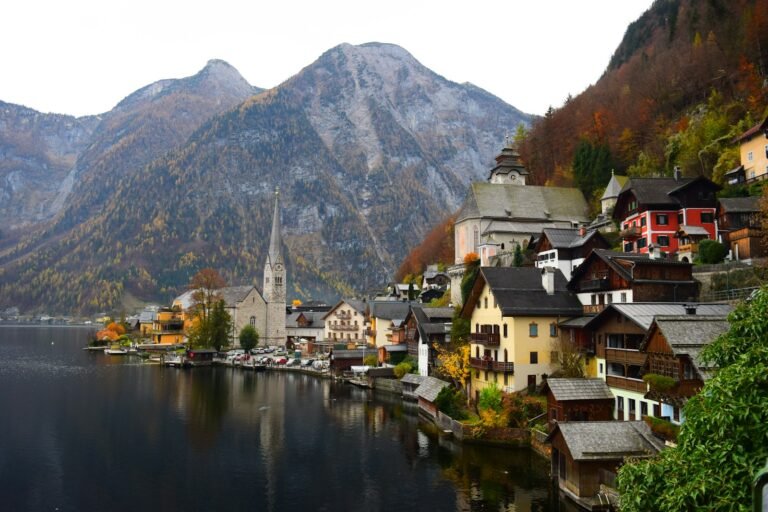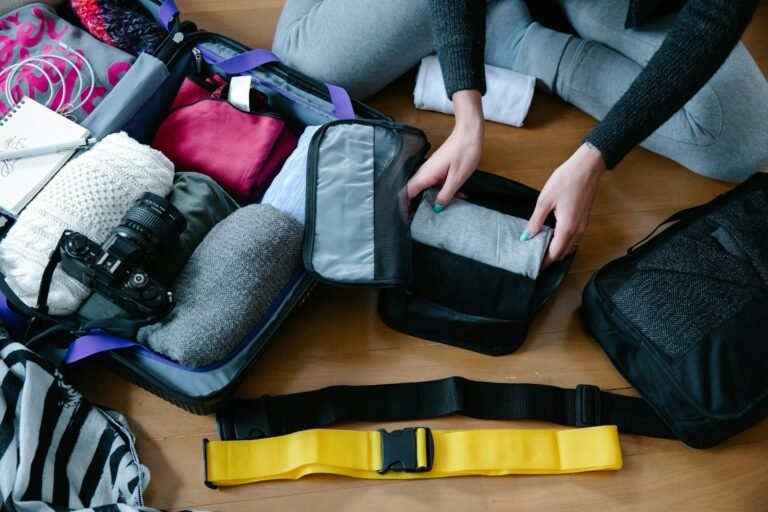I remember my first attempt at planning a Europe trip. My map was a mess of dreams—London, Paris, Florence, Prague. Each dot was a promise. But reality hit hard in Milan at 6 a.m., with tired eyes and a long list.
That’s when I learned the secret. A flexible plan that fits your interests, time, and budget is better than a tight schedule. And that’s exactly what this Europe trip planner is all about—helping you turn a wish list into a trip that actually works.
Now, I have a simple method for planning every trip. I start with what I love—art, food, history. Then, I shape the route to match the season and my energy. Rick Steves taught me to turn my wish list into a day-by-day plan, stay flexible, and assume I’ll return.
Open-jaw flights save hours. Staying for at least two nights keeps sanity. And a “vacation from your vacation” day each week keeps joy alive.
This guide is your friendly europe travel planner and eu trip planner all in one. We’ll cover planning your trip without losing the magic. We’ll talk about smart geography, timing, and transportation options like trains and low-cost flights.
We’ll also discuss when a car is a good choice. We’ll cover crowds, festivals, and those pesky Monday museum closures. By the end, you’ll plan your trip with confidence and create an itinerary that fits your budget and preferences.
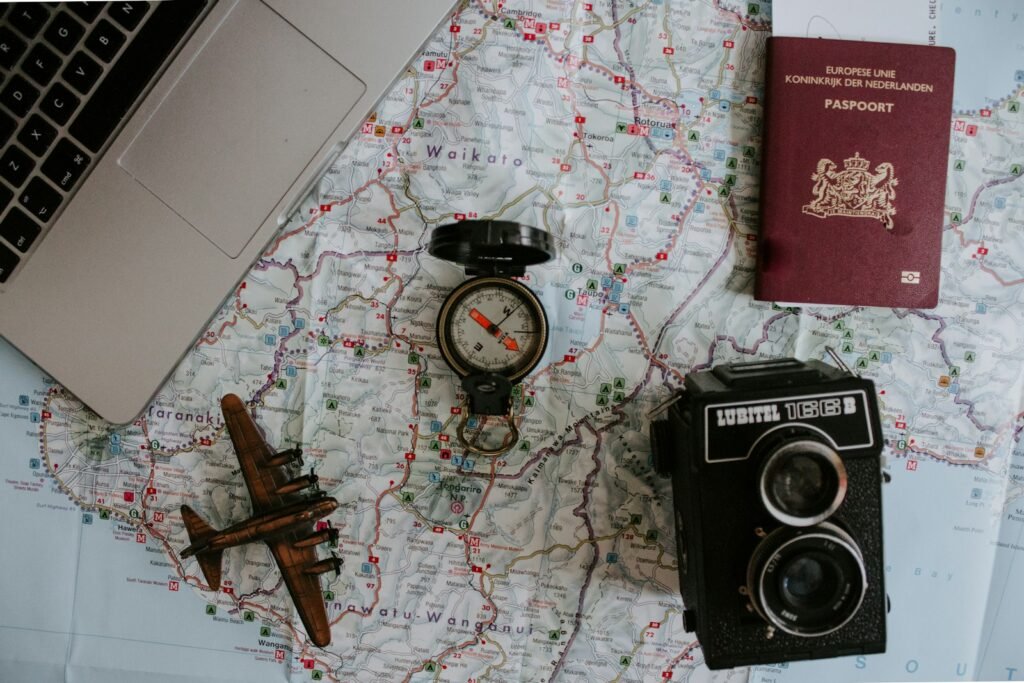
The Short List
- Start with your interests, then shape the route to match time, season, and budget.
- Use open-jaw flights to avoid backtracking and save transit time.
- Aim for at least two nights per stop and add one slack day per week.
- Map destinations logically and balance fast highlights with slow travel.
- Check festivals, closures, and public holidays before you lock plans.
- Compare trains, low-cost flights, cars, and ferries for each leg.
- Assume you’ll return—edit the wish list to protect energy and joy.
Start With Purpose: Match Your Route to Your Interests, Timeline, and Travel Style

I always start by thinking about what excites me. This is key to planning a trip to Europe. If I love Renaissance art, Florence is a must. For World War II history, Normandy is essential. And if great beer is my goal, Belgium is the place to be.
Prioritize places that fit your passions (art in Florence, WWII in Normandy, beer in Belgium)
I make a big list of places I want to see. Then, I pick one reason to visit each spot. This keeps my trip focused. I mix city life with countryside breaks to avoid getting tired.
For example, I might visit Venice, then relax in Tuscany, and end in Rome. This way, my trip is balanced and memorable.
Balance travel style: fast-paced highlights vs. slow travel in fewer bases
Fast travel is exciting but tiring. Slow travel lets me live like a local. I stay in each place for at least two nights to fully explore.
This approach makes my trip smoother and cheaper. I save time and money by not constantly moving.
Use a wish list, then trim to what fits your dates and budget
After planning my nights, I check if it fits my budget and schedule. If not, I cut back. For example, I might choose between Oxford and Cambridge.
I use trusted tools to check prices. Guides like least expensive way to travel help me stay on track. This way, I plan my trip without stress.
- Sort stops into musts and maybes.
- Trim places that take the most time to reach.
- Keep transfers short to protect energy and budget.
My trip itinerary reflects my interests, travel style, and schedule. It’s intentional and enjoyable. This is how I plan my Europe trip.
Build a Logical Route: Open-Jaw Flights and Smart Geography
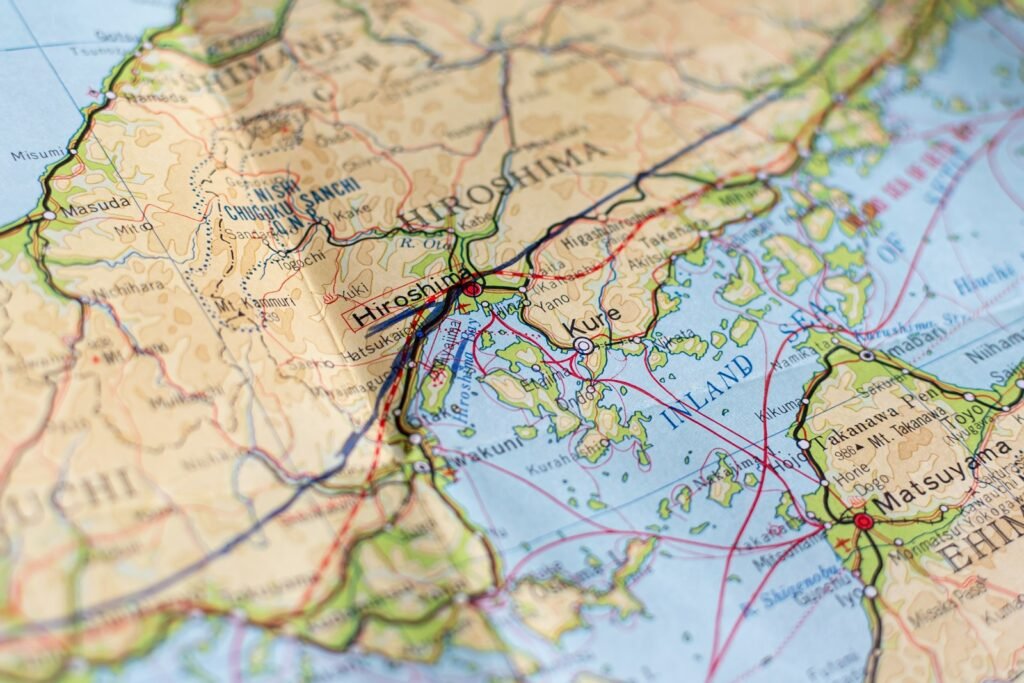
I plan every europe trip with a straight line, not a circle. An open-jaw ticket lets me start in one place and end in another. This saves time and money, making it a smart choice for any trip.
When picking routes, I start with a map. Then I look at travel times and costs. Short flights add up to a great trip when you avoid busy travel times.
Fly into one city and out of another to avoid backtracking (e.g., London to Athens)
Open-jaw tickets save you from backtracking. For example, fly into London and out of Athens. Even if it costs a bit more, it’s worth it to avoid long trips back.
Map destinations to minimize transit time and costs
I arrange cities in a straight line. Then I check out trains, flights, and driving times. This way, you spend more time exploring and less on travel.
- Travel after 4 p.m. or after dinner to save time.
- Compare total travel times, not just station-to-station.
- Watch out for one-way car drop fees, even across borders.
Consider cultural progression (England → Alps → Italy) to reduce culture shock
I start with England, then the Alps, and end in Italy. This gradual change helps you adjust to new places and cultures. By the time you reach Rome or Naples, you’re ready.
Once the route is planned, I focus on that area. This keeps costs down and makes the trip more enjoyable. It turns a good plan into a successful europe travel planner.
Time It Right: Weather, Crowds, Festivals, and Public Holidays
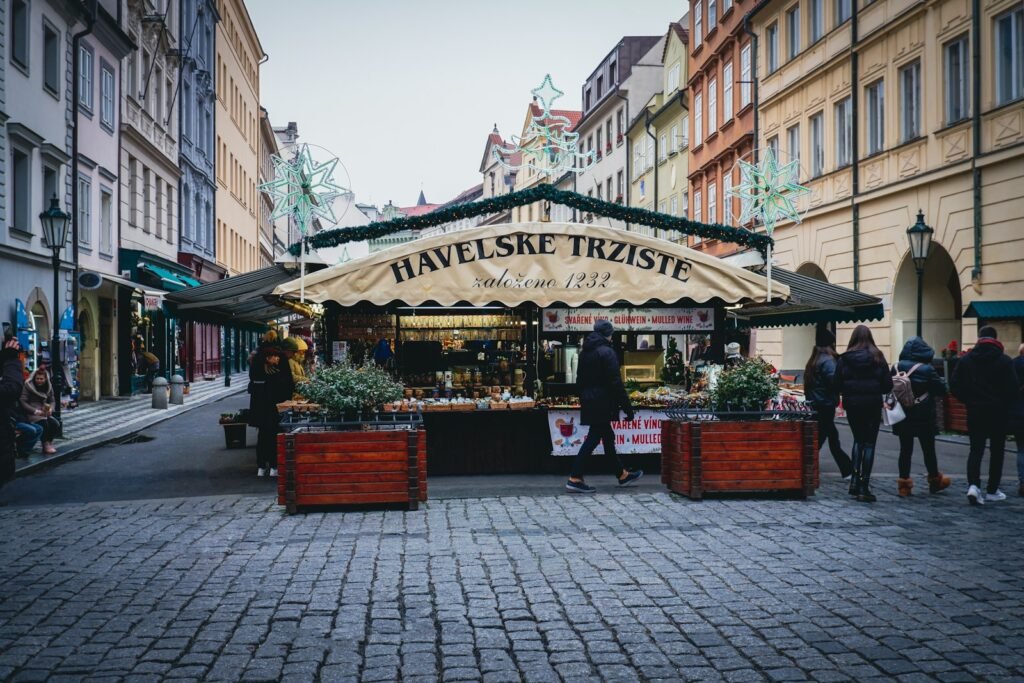
I plan my europe trip dates by season first. Then, I add in events and closures. This way, my trip stays smooth and affordable. The shoulder seasons offer great weather, fewer crowds, and perfect light for photos.
Align cooler months with warmer regions and vice versa
In spring, I start in the Mediterranean, like Andalusia or Sicily. Then, I move north as the weather gets warmer. By midsummer, I head to Scandinavia, Britain, Ireland, or the Alps to avoid the heat and crowds.
This south-to-north path saves energy and money. It’s perfect for a 2-week europe trip.
- Spring: Seville’s orange blossoms, then Paris or Amsterdam as days lengthen.
- Summer: Oslo, Edinburgh, Interlaken, or the Dolomites for breezy hikes.
- Fall: Tuscany harvests and crisp city walks in Berlin or Prague.
I plan my days for comfort. Paris is best in the morning, Florence at sunset, and Venice at dawn. Early strolls in Granada and Edinburgh are also great for photos.
To plan better, I check this guide to the best cities in Europe to visit. I fit stops into my season plans.
Research festivals like Oktoberfest and book early or plan to avoid them
Festivals can make or break your trip dates. Munich’s Oktoberfest usually happens in late September. Prices and rooms skyrocket then. If you want to go, book months in advance. If not, avoid those weeks or stay in nearby towns with easy trains.
- Check exact dates, not guesses—many events shift yearly.
- Reserve stays before buying nonrefundable trains or flights.
- Have a backup base or alternate city in your notes.
Choose events that match your interests. Film in Cannes, opera in Vienna, jazz in Montreux, or Christmas markets in Cologne. A bit of planning can save you money on your 2-week europe trip.
Check closures and holiday impacts for museums and transit
Most big museums close one day a week—often Monday. Don’t visit Paris on a Monday if you must see the Musée d’Orsay. National holidays can cut museum hours, thin transit schedules, and clog highways with long-weekend traffic.
- Confirm opening days before you lock in a city’s dates.
- Buy timed entries for icons and plan mornings for headliners.
- Pad transfers around public holidays to avoid missed trains.
For summer heat, tour palaces early and have a long, indoor lunch at noon. In winter, Edinburgh is great—fewer lines at Edinburgh Castle and the Royal Mile. Plan your trip with these tips to keep momentum without burnout.
Plan Smart Stays: Minimize One-Night Stops and Build Slack
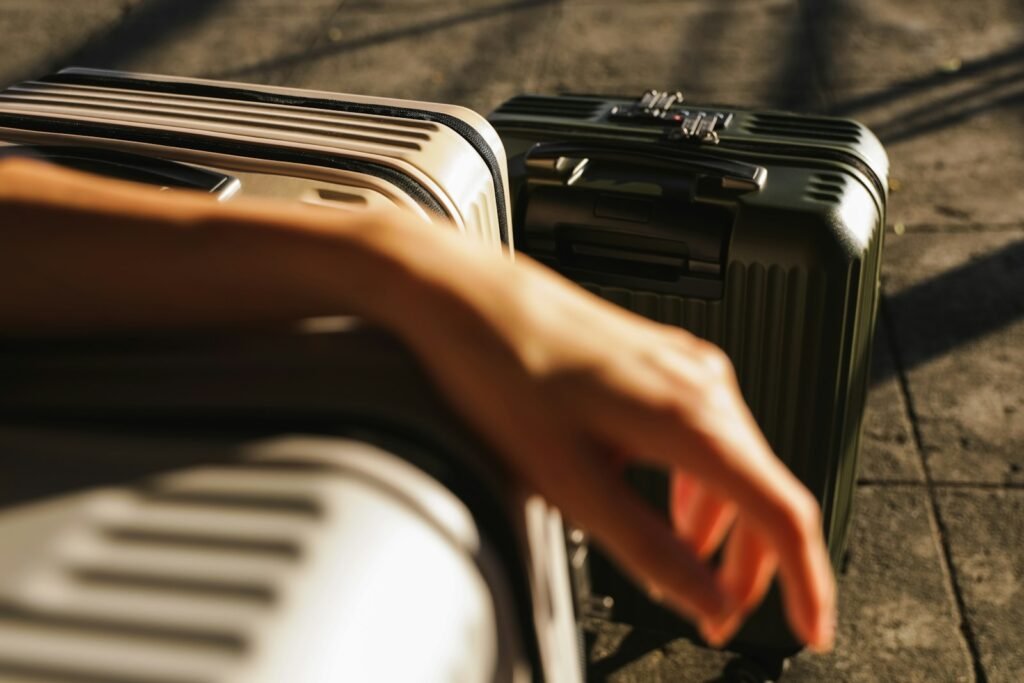
I plan my europe trip itinerary with rest in mind. I choose two-night stays to enjoy a full day of sightseeing and a calm evening. This way, I make my trip the best without getting tired.
Aim for two-night minimums for full sightseeing days
My rule is to stay at least two nights in each place. One-night stays waste time on packing and checking in. With two nights, I can explore fully and sleep well.
- Night 1: arrive, wander nearby, early to bed.
- Day 2: prime sightseeing with energy and focus.
- Morning 3: relaxed checkout and short hop to the next base.
This pace keeps my trip smooth and saves money.
Use home bases for day trips to reduce packing/unpacking
I choose key locations as my base. Florence for Tuscany, Nice for the French Riviera, and Amsterdam for the Dutch countryside. Staying in one place saves money and lets me enjoy local life more.
- From Florence: Siena, Pisa, or Lucca by train.
- From Nice: Antibes, Cannes, or Monaco in under an hour.
- From Amsterdam: Haarlem, Zaanse Schans, or Utrecht.
This method makes my trip budget-friendly and keeps it flexible.
Add one “vacation from your vacation” day per week
Every week, I take a day off. I do laundry, enjoy a long lunch, or relax by a river. If I’m traveling two weeks, I take a break in the middle. Maybe in the Alps, a quiet island, or a rural village.
- Protect slack to absorb delays and weather.
- Trim time from several stops instead of adding another city.
- Assume you’ll return; skip the farthest outlier to save sanity.
Longer stays mean richer experiences and memories.
Europe Trip Planner
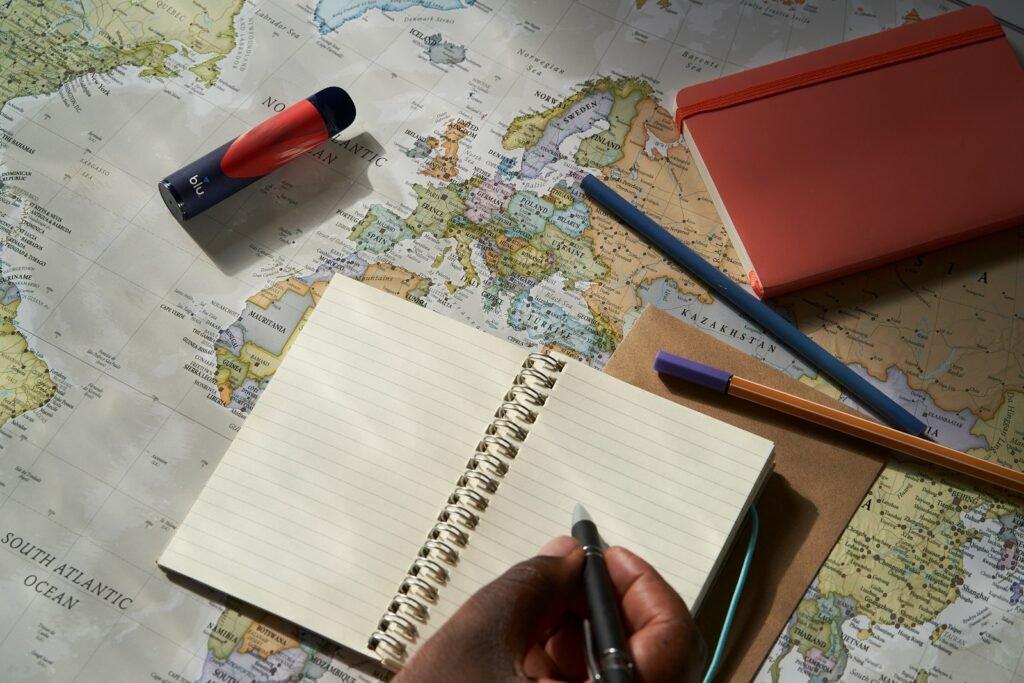
I see a europe trip planner as a flexible guide. I start by making a list of places I want to visit and why. This makes sure my trip is meaningful and budget-friendly.
Then, I draw out my route on a map and set a schedule. I only book specific dates for cities if there’s a big event or attraction. Using open-jaw flights, like starting in London and ending in Rome, saves time and money.
Transit by leg is essential for planning travel in europe. I prefer trains for short trips, like Amsterdam to Paris. For longer distances, I look for cheap flights. Renting a car is best for exploring rural areas.
I decide how many nights to spend in each place. Two nights means one full day to explore. I use tools like Rome2Rio to estimate travel times and add extra time for delays. This keeps my trip smooth and realistic.
If I’m short on time or money, I make cuts. I skip places that are similar and avoid long, time-consuming stops. I also check if attractions are open and if there are any events that might be crowded.
Sharing my plan with my travel group is the final step. I use TripIt to organize all the details, so everyone knows what to expect. This makes planning travel in europe easy and allows me to make adjustments for future trips.
This method works for any group size or type of traveler. It helps me plan trips that fit my style and preferences. Whether it’s a two-week adventure or a longer journey, this approach helps me stay organized and enjoy every moment.
Choose Transportation Modes Strategically: Train, Low-Cost Flights, Car, and Ferries
I compare every leg before I book. For the europe travel planner in me, speed, cost, and stress all matter. Trains shine between major hubs, while planes help on long jumps. Cars rule in the countryside. Ferries connect coasts and islands with a view!
Compare rail times, drive times, and air links for each leg
On busy corridors, high-speed rail is fast and easy. I cross-check routes on Rome2Rio, then verify with national rail sites or airlines. For longer hops, low-cost carriers like Ryanair and easyJet can beat train times. Read baggage rules closely to avoid fees, specially on separate tickets.
When planning a two week trip to europe, I weigh station-to-station timing, airport transfers, and security lines. Packing light helps with platforms and tight layovers. A quick glance at an all-in-one route checker also surfaces ferries you might miss.
Factor one-way car rental/drop fees and border surcharges
Car rentals unlock rural gems like Tuscany’s hill towns and the Dolomites’ valleys. But one-way drops can sting, even within one country, and cross-border returns cost more. I run the math before I commit and ask for an English-speaking driver if I book a transfer.
Read the rental fine print: deposits, fuel policy, and cancellation terms. If I’m optimizing the best travel itinerary for europe, I’ll compare a short rental plus trains against a full trip by car. A quick check of a rental policy overview keeps surprises off the bill.
Pre-book popular ferries and understand baggage rules on budget airlines
Greek islands, Norway fjord links, and Mediterranean routes can sell out in peak season. I book popular sailings early and allow buffer time for boarding. High-speed ferries are smoother and save hours when the sea cooperates.
Budget airlines are great for distance, but strict bags can slow you down. I align tickets to avoid risky self-transfers, and I keep a small case so I can pivot if plans change. This approach keeps the europe travel planner in check and supports the best travel itinerary for europe without stress.
Lock In Flights Like a Pro: Search, Price Alerts, and Layover Tactics
I book my flights early to set the pace for my trip. When planning my europe itinerary, I start by looking at a wide range of dates. I compare prices and routes to find the best fit for my trip. This approach helps keep my two weeks in europe both enjoyable and stress-free.
Use Google Flights, Skyscanner, and Momondo; set alerts
I start with Google Flights for its calendar and route map views. Then, I check Skyscanner and Momondo to see trends. I set alerts on all three to watch prices closely. When I find a good deal, I book quickly to stay within my budget.
- Create alerts for multiple departure airports and nearby arrival cities.
- Track bag fees and seat costs to compare true totals.
- Use a flexible date grid to refine how to plan european vacation timing.
Consider open-jaw/multi-city tickets for efficient itineraries
Open-jaw tickets save time and money by avoiding backtracking. For example, flying into Rome and out of Milan, or into London and home from Athens, can be more efficient. It often turns out to be the best choice after considering trains and extra nights.
Before buying, I search for deals on hundreds of airlines at once. This helps me plan two weeks in europe without wasting time or money.
Plan manageable layovers; pack light to ease airline switches
Self-transfers require extra time, so I plan ahead. If I have a long layover, I explore the city instead of waiting. Packing light makes these extra stops easy and keeps my trip on schedule.
- Aim for 2–3 hours on self-transfers; more if changing terminals.
- Keep essentials in a personal item in case of a short switch.
- Think hand-luggage only for how to plan european vacation flexibility.
Once flights are booked, my dates and pace are set. This makes my two weeks in europe smooth from start to finish.
Reserve Character-Rich Stays: Location, Access, and Local Flavor
I choose places that shape my days, not just my nights. A good choice can make your trip unforgettable, whether it’s a two week trip or a quick city visit. My travel planner always starts with location, access, and local vibe.
Pick neighborhoods near transit or sights for time savings
I look for places within a 10-minute walk of public transport or major sights. This saves time and keeps energy up. It also helps keep your itinerary on track, even on long days.
- Stay near hubs like Gare de Lyon in Paris or Termini in Rome for easy rail links.
- Check late-night transit options so you can linger at dinners or shows.
- Confirm elevator access if you’ll have luggage or mobility needs.
Mix hotels, B&Bs, agriturismi, and apartments for authentic stays
I mix different types of stays to match each place. Boutique hotels offer 24/7 staff and perks. B&Bs and agriturismi provide warm hosts and local breakfasts. Apartments are great for stretching your budget with kitchens and extra space.
- Plan three or more nights to settle in, unpack once, and find your local café.
- Ask about quiet rooms facing courtyards to sleep better on a tight route.
- If you’re driving, check parking fees and zones before you commit.
Compare Booking/Airbnb vs. direct booking perks (e.g., breakfast)
Euro Travel Coach suggests checking Booking.com and Airbnb first, then direct with the property. You might find perks like breakfast, flexible check-in, or a better rate. These can be key to making the most of your trip.
- Verify check-in windows and self-entry details for late arrivals.
- Confirm payment terms and cancellation timelines in writing.
- If a top pick is sold out, search for comparable options nearby—planning ahead keeps a two week europe trip smooth.
With a solid plan for neighborhoods, stay types, and booking, your travel planner becomes a secret superpower. Every night supports the days you came for.
Design Your Daily Plan: Must-Sees, Skip-the-Line, and Offbeat Gems
I plan each day around the sights I must see. I also make time for easy moments. This makes my trip smooth and fun. It also lets me enjoy surprises along the way.
Before setting times, I check if museums and churches are open. Many big spots close on Mondays. I don’t want to find out at the door.
Confirm opening days; avoid Monday closures at major museums
- I check official sites for the Musée d’Orsay, the Prado, and the Rijksmuseum.
- I note weekly closures and holiday hours in my europe trip planner.
- If a must-see is closed, I swap days early so the europe travel itinerary stays intact.
For key spots like the Vatican Museums or the Eiffel Tower, I plan the whole day around them. This way, even a busy day feels relaxed.
Buy timed-entry/skip-the-line tickets to maximize time
- I book timed entries for Sagrada Família, the Colosseum, and the Uffizi.
- High-demand hours sell out, so I grab morning or late evening slots.
- For tactics on pacing a big city day, I use this smart guide: plan your days with mixes of free sights and timed.
If a line is inevitable, I place it first or last. I pair it with nearby cafés or parks. This saves energy and keeps my trip on track.
Blend icons with local markets, neighborhoods, and cultural experiences
- Anchor the morning with one icon, then wander a market like La Boqueria or Borough Market.
- Spend midday in a neighborhood—Trastevere, Le Marais, or Jordaan—for slow streets and local food.
- Add a workshop or walking tour that fits your style, from street art to food tastings.
I ask hosts and guides for ideas the apps miss. Then, I pencil in short detours. This makes my trip unique and enjoyable.
I travel fast enough to see the legends, yet slow enough to meet the city on its own terms.
Keep days light: one headliner, one timed entry, and space to breathe. With this rhythm, your trip stays flexible and hits all the must-sees.
Paperwork & Practicalities: Passports, ETIAS, Phones, and Payments
I keep this part simple and calm. Good preparation keeps your trip on track and saves money. For a 12 day europe trip itinerary or longer, small checks now prevent big headaches later.
Check passport validity and kid expirations
I start with passports. Many European countries need six months’ validity beyond your return date. Adult passports last 10 years, but kids’ passports last 5, so they expire sooner than you think. I set a calendar alert a year out to renew early—rush fees sting.
- Match names exactly across tickets and IDs.
- Carry digital and printed copies of your passport photo page.
- For families, confirm consent rules for traveling with minors.
Plan for ETIAS and stay current
Next, I budget time and a small fee for ETIAS, a new pre-travel requirement for visa-free visitors to many European countries. Before booking nonrefundable items, I read the official guidance at the ETIAS site so my europe trip planner stays compliant. I also check any health advisories and keep routine vaccines up to date.
- Expect an online application and a modest charge; apply well before departure.
- Keep your email handy for approval notices and reference numbers.
- Print or save the authorization with your boarding passes.
Sort roaming, banking, and backups
For phones, I test an eSIM or add an international plan a week before I fly. I download offline maps in Google Maps and keep boarding passes in Apple Wallet or Google Wallet. This is how to plan european vacation logistics without stress.
- Notify banks and set travel dates for Visa or Mastercard; American Express and Discover work less often.
- Use ATMs from partner banks for better exchange rates; avoid dynamic currency conversion.
- Carry two cards and a small stash of cash for markets and small cafés.
Lastly, I pack light and leave space for finds. TripIt or Google Drive keeps confirmations, insurance, and rail tickets tidy so my europe trip planner flows day to day. These habits scale from a weekend hop to a 12 day europe trip itinerary and beyond, and they anchor any europe travel itinerary in the real world.
Sample Europe Itineraries: From Two Weeks to City Trios
I’ve tested these routes for you, so you can skip the guesswork. Each plan fits a two week europe itinerary without rushing. You can scale them into a 14 day europe travel itinerary or stretch to a 15 days in europe itinerary if you want extra downtime. Use these as a base, then tweak for your flights, budget, and pace.
For first-timers, I keep transit simple. I aim for relaxed mornings, late-afternoon golden hours, and one big sight per day. This way, a europe trip itinerary 2 weeks stays fun, not frantic.
Two weeks in Europe: London → Paris or Rome → Florence → Venice (+Cinque Terre)
For 2 weeks in europe, I like London and Paris split 5+5 days, with the Eurostar in between. Add a day trip to Bath or Windsor from London, and Versailles from Paris. It’s the best europe itinerary 2 weeks if you love museums, markets, and easy rail.
Crave Italy? Try Rome → Florence → Venice for a classic two week europe itinerary. Use high-speed Trenitalia or Italo. If you’ve got a cushion, slide down to Cinque Terre for sea views and an aperitivo at sunset. This two week europe trip hits icons without endless packing.
City trios by train: Amsterdam, Brussels, Paris or Budapest, Vienna, Prague
For smooth hops, Amsterdam → Brussels → Paris is a winner for 2 weeks travelling europe. Book Thalys/Eurostar for quick rides. Time spring for tulips at Keukenhof and canal sunsets in Jordaan.
In Central Europe, the Budapest → Vienna → Prague trio mixes thermal baths, coffeehouse culture, and Gothic lanes. It’s ideal for backpacking europe routes 2 weeks, with frequent trains and walkable old towns—great value, too.
Seasonal picks: Iceland Ring Road (summer), Northern Norway (midnight sun)
Summer suits a 14 day europe travel itinerary around Iceland’s Ring Road. Think Blue Lagoon, Snæfellsnes, Mývatn, Jökulsárlón, glacier walks, the South Coast, and the Golden Circle, capped with Reykjavík nights. Long days make driving and hikes easy.
Chasing light? Northern Norway shines from Tromsø to Senja, Vesterålen, and the Lofoten Islands. Under the midnight sun, hikes and scenic drives stretch late. If you have room, extend to a 15 days in europe itinerary for extra fjord time.
- London + Paris: effortless rail link and world-class sights for a europe trip itinerary 2 weeks.
- Rome + Florence + Venice: art, pasta, and lagoon sunsets in a tight two week europe trip.
- Amsterdam + Brussels + Paris or Budapest + Vienna + Prague: fast trains, rich history, and budget-smart choices for 2 weeks travelling europe.
- Iceland or Northern Norway: nature-first plans that fit a flexible two week europe itinerary.
I build in one buffer day no matter what. It keeps the best europe itinerary 2 weeks feeling human, and it gives you space for serendipity—those small café stops and street concerts that make a trip sing.
Food & Culture Planning: Eat Local and Book the Big Tables
I plan meals as carefully as museum visits because food is culture. For a top europe itinerary, I book big tables early and leave room to explore. I choose local foods, visit markets, and try street food for a balanced trip.
Reserve top restaurants; also explore markets, street food, mom-and-pop spots
I book famous restaurants weeks in advance, like counters in Barcelona or bistros in Paris. Then, I fill in the gaps with markets, bakeries, and family spots. This mix keeps my trip exciting and budget-friendly.
- Set two or three “musts,” then keep the rest flexible for finds you smell or see.
- Swap pricey hotel breakfasts for bakeries or markets; it’s fresher and cheaper.
- For savvy budgeting, I like this guide on eating in Europe on a budget.
Seek regional specialties and farm-to-table within a 20-mile radius
Local-first makes 2 weeks travelling europe richer. In Barcelona, I chase tapas and cava. In Tuscany, I book rustic trattorie and pour Chianti. In Belgium, I pair pralines with Trappist ales. In Paris, I start at a boulangerie, then slide into a neighborhood bistro.
- Ask what’s in season and where it’s from; short supply chains mean peak flavor.
- Try lunch at top spots for the same kitchen at softer prices.
- Use QR menus and rating apps to scan options fast and spot daily specials.
Ask hosts for local-only tips and tastings
Hosts, guides, and bartenders make a good europe itinerary great. I ask for seasonal tastings, farm visits, or small producers. Pointing and smiles beat language gaps, and an extra night in a food-forward area can redefine the best europe itinerary.
- Book a splurge meal, then balance with picnics or a simple pasta night.
- Call or book online for hot tables; cancellations pop up the day before.
- For a best europe trip itinerary, note one anchor meal per city and keep the rest open for serendipity.
Wrapping Up
I plan every trip with one goal: make room for real experiences. A good europe trip planner starts with purpose, not a checklist. It’s about matching your passions to a logical route and moving at a humane pace.
Time your trip with the weather and events. Open-jaw flights cut backtracking. And, two-night minimums protect full sightseeing days.
I build each leg with care. I compare trains, low-cost flights, cars, and ferries. Then, I lock fares using alerts on Google Flights, Skyscanner, and Tourow.
I pre-book high-demand ferries and timed museum entries. This way, I spend less time in lines and more time exploring. A europe travel planner also looks for character-rich stays near transit.
Paperwork matters. I keep passports valid well beyond return dates. I prep for ETIAS when it launches, sort eSIMs for roaming, and notify banks. One shared itinerary keeps confirmations, tickets, and day plans in sync.
Steal proven patterns and shape them to fit your budget and calendar. Try London–Paris, Rome–Florence–Venice, or Amsterdam–Brussels–Paris. Or, explore Iceland’s Ring Road or Northern Norway in summer. Assume you’ll be back.
With that mindset, your europe trip planner evolves into the best europe itinerary. It’s authentic, affordable, and unforgettable.

